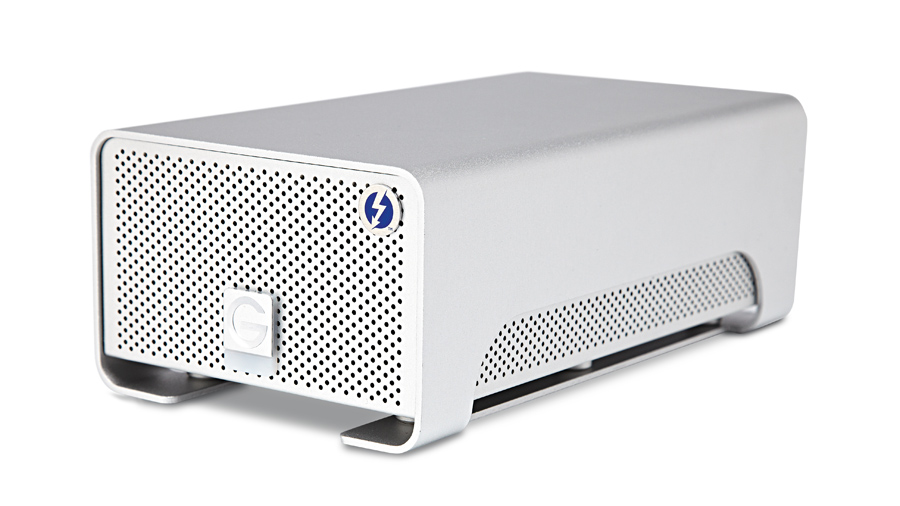TechRadar Verdict
Pros
- +
Decent speeds
- +
Two Thunderbolt ports for daisy-chaining
Cons
- -
Really expensive
- -
No Thunderbolt cable supplied
Why you can trust TechRadar
Any interface, especially a new one, is only as good as the things you can plug into it. This means that a lot of Thunderbolt's success will depend on how many desirable new products enter the market and show off its potential, and how quickly.
One of the first things you'll notice about the G-RAID with Thunderbolt isn't all the Thunderbolt-related goodness it offers, but the price. Sure, you get 4TB of drive space for your money, but costing around the £500/$700 mark, the G RAID With Thunderbolt will have to be a pretty special external hard drive to make it worthwhile for early adopters.
As Thunderbolt was originally a collaboration between Intel and Apple, the new Macbook Pros have been rocking the new ports for a while now. This means that a lot of the Thunderbolt drives on the market today come formatted for Macs. The G RAID with Thunderbolt is no exception here, so don't panic if you decide to splash the cash and nothing happens when you plug it in - you'll need to go into Computer Management, then Disk Management to format the drive and get it ready to use.
It comes with two disks, so from here you can choose to either use them as two separate hard drives, or set them up in a RAID array.
Cable news
The casing is solid, and while it doesn't look too bad, it is quite big. It can also run hot when you're using it for long periods of time.
Like any Thunderbolt product worth its salt, it comes with two ports so you can connect it to other devices in a daisy-chain. Sadly it doesn't come with a Thunderbolt cable, so you'll have to buy one before you can use it. A minor inconvenience maybe, but unlike USB, Thunderbolt hasn't been around long enough for us to have a drawer full of spare cables.
When you're already paying £500 for an external drive, not having a cable supplied is a little, well, tight.
Bolt from the blue
The real reason you might be willing to shell out this kind of money for an external drive (along with paying more for a cable and probably upgrading your motherboard to get a Thunderbolt port) is the speed. The G RAID with Thunderbolt had better be fast, right?
Well, it's certainly not slow. In our AS SSD benchmark tests the G RAID managed 143MB/s sequential write speeds and 144MB/s read, with access times of 15.6ms for read and 2.5ms for write. That's quick, but nothing spectacular considering the price. In fact, it's not much faster than USB 3.0 speeds.
The reason? It all boils down to the two hard drives inside the G RAID, which are spinning at 7,200rpm. This means that much of Thunderbolt's vaunted 10Gb/s bandwidth is all but redundant when running a single device.
The G RAID with Thunderbolt is supplied in a RAID 0 configuration for Macs, so we set it up in RAID 0 in Windows. The results were slightly better at 151MB/s write, and 153MB/s read. That said, it's still not worth the money.

Matt is TechRadar's Managing Editor for Core Tech, looking after computing and mobile technology. Having written for a number of publications such as PC Plus, PC Format, T3 and Linux Format, there's no aspect of technology that Matt isn't passionate about, especially computing and PC gaming. He’s personally reviewed and used most of the laptops in our best laptops guide - and since joining TechRadar in 2014, he's reviewed over 250 laptops and computing accessories personally.
